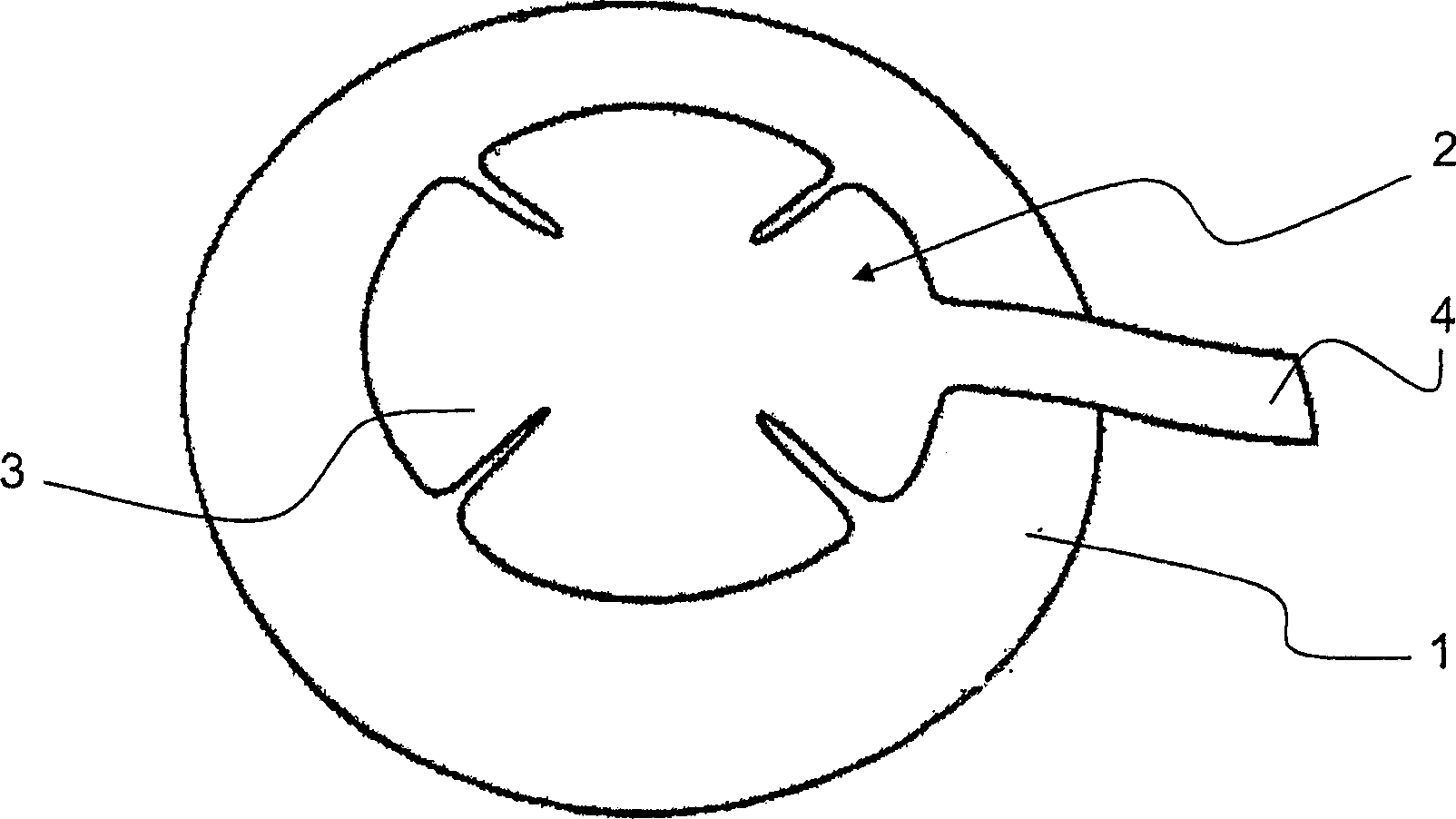Ophthalmic lens which is coated with an electrostatic film and method of edging one such lens
A lens and film technology, applied in the field of ophthalmic lenses, can solve the problems of lens waste, difficult to obtain trimming operation, changing the adhesion of liner and convex contact surface, etc.
- Summary
- Abstract
- Description
- Claims
- Application Information
AI Technical Summary
Problems solved by technology
Method used
Image
Examples
example 1
[0102] Process such a substrate, that is, the substrate is based on CR39 ORMA 15 Supra ophthalmic lens, with a diopter of -2.00, a diameter of 65mm, and includes a polysiloxane type anti-wear coating on both sides.
[0103] 1-1 Description of substrate processing
[0104]The vacuum processor used is a Balzers BAK760 machine equipped with an electron gun, an "End-Hall" Mark 2Commonwealth ion gun, and a Joule effect evaporation source.
[0105] The lens is arranged on the carousel, and the concave side faces the evaporation source and the ion gun.
[0106] The pumping operation is performed before reaching the secondary vacuum.
[0107] The Mark 2 ion gun uses an argon ion beam to irradiate the substrate surface to activate the substrate surface.
[0108] Then, after the ion radiation has been interrupted, the electron gun is used to continuously evaporate 4 anti-reflection optical layers, namely high refractive index (HI), low refractive index (BI), high refractive index (HI), ...
example 2
[0128] 30 polycarbonate lenses with a diopter of -2.00 were processed as described in paragraph 1-1 of Example 1.
[0129] 1-1 Apply electrostatic film and put the lens in the bag
[0130] Reference lens
Polycarbonate, -2.00 diopter, 70mm diameter
Quantity
15 lenses
Bag provider
Schock / Papier Fabrik Lahnstein Schock
[0131] An electrostatic film with a protrusion and a diameter of 38 mm was manually applied to the middle of the convex side of the remaining 15 lenses.
[0132] Reference lens
PUM
| Property | Measurement | Unit |
|---|---|---|
| Thickness | aaaaa | aaaaa |
| Thickness | aaaaa | aaaaa |
| Surface energy | aaaaa | aaaaa |
Abstract
Description
Claims
Application Information
 Login to View More
Login to View More - R&D Engineer
- R&D Manager
- IP Professional
- Industry Leading Data Capabilities
- Powerful AI technology
- Patent DNA Extraction
Browse by: Latest US Patents, China's latest patents, Technical Efficacy Thesaurus, Application Domain, Technology Topic, Popular Technical Reports.
© 2024 PatSnap. All rights reserved.Legal|Privacy policy|Modern Slavery Act Transparency Statement|Sitemap|About US| Contact US: help@patsnap.com








